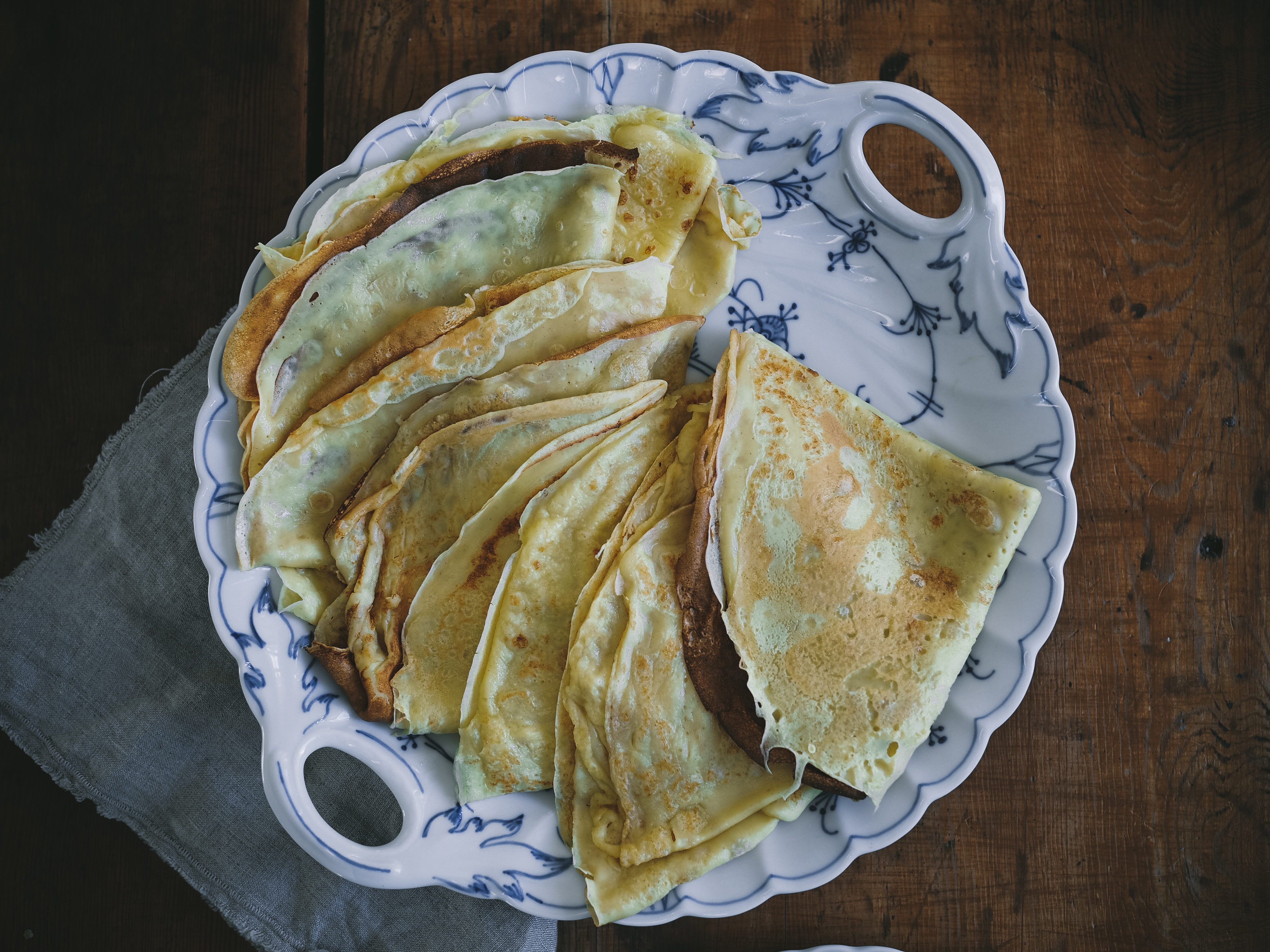

The smell of eggy batter cooking atop a skillet is almost unmistakable. It draws you in as it evokes loving memories to the forefront.
Pancakes (pannekaker) are deeply embedded into the Norwegian food culture. They’re typical “farm to table” food, with the ingredients sourced from a working farm – eggs from the hens, grain from the fields, and milk from the cows.
Pancakes are also an ideal base for sweet or savory toppings and fillings and are enjoyed extensively throughout the country by one and all for a multitude of occasions.

The Norwegian pancake is loved off the table as well. The fairytale, Pannekaken “The Pancake”, was collected and published in 1842-1844 by Peter Asbjornsen and Jorgen Moe as part of their collection of Norwegian tales. The story, similar to the American tale of The Gingerbread Man, which first appeared in print in 1875, tells the story of a pancake that runs away from a hungry family. The pancake meets others along his journey wishing to eat him only to escape until he finally falls for the cunning lies of the pig and gets eaten.
While the moral of the story delves into topics regarding possession and lying, as well as not trusting anyone without consideration, the use of a pancake as the main character is a simple one. That is, it’s easy to relate to the desire one gets when a freshly cooked pancake comes off the pan. Most people wouldn’t turn down a pancake if they were offered one, they might even chase one down if it started to run away.
Når jeg har gått fra kone krone, gamlefar’n og syv skrikerunger, fra mann brann, fra høne pøne, hane pane, ande vanne og fra gåse våse, så kan jeg vel få gå fra deg, gasse vasse», sa pannekaka, og tok på å trille og trille det forteste den orket.
Asbjørnsen og Moe. “Pannekaken”, Norske Folkeeventyr. Photo credit: eventyrforalle.no


The Norwegian pancake is thin and eggy. Delicate, and yet hearty at the same time. When using fresh farm eggs, they take on a beautiful golden yellow color from the yolks. There are variations of the recipe and ways to serve them, but this is the most common and straightforward one, using all-purpose flour, milk, and eggs.
Pannekaker (Norwegian Pancakes)
(Serves 4)
- 1 ½ cups (180 g) all-purpose flour
- ½ teaspoon salt
- 2 cups plus 1 tablespoon (500 ml) milk
- 4 large eggs
- Butter, for frying
In a large bowl, combine the flour and salt.
Slowly whisk in the milk, a little at a time, until you have a smooth batter without any lumps. Add in the eggs and mix well to combine.
Let the batter swell for 15 to 20 minutes.
Heat a frying pan or skillet over medium heat. Place a little butter in the pan to evenly coat it, using more or less as needed throughout cooking to prevent sticking. Ladle in some of the batter, moving the pan around to coat the bottom evenly. Cook until the bottom of the pancake has set and turned golden in color. Flip it over with a spatula to finish cooking the other side. Transfer the pancake to a plate (cover to keep warm) and continue this process until all the batter has been used up.
Serve with your favorite toppings or fillings, such as jam and sour cream.




Leave a Reply